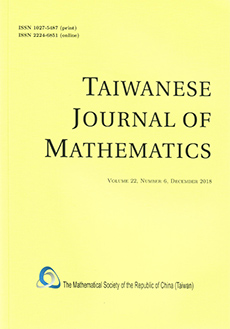Abstract
The usual models of the chemostat assume that the competition is purely exploitative, the competition is only through the consumption of the nutrient. However, it is known that microorganisms can produce toxins against its competitors. In this work, we consider a model of competition in the chemostat between plasmid-bearing, plasmid-free organisms for a single nutrient where plasmid-bearing organism can produce a toxin (allelopathic agent) against the plasmid-free organism at some cost to its reproductive abilities. We give a characterization of the outcome of this competition in terms of the relevant parameters in hyperbolic cases. The global asymptotic behavior of the solutions is proved by using the perturbation of a globally stable steady state for a sufficiently small plasmid loss rate.
Citation
Sze-Bi Hsu. Paul Waltman. "MODEL OF THE EFFECT OF ANTI-COMPETITOR TOXINS ON PLASMID-BEARING, PLASMID-FREE COMPETITION." Taiwanese J. Math. 6 (1) 135 - 155, 2002. https://doi.org/10.11650/twjm/1500407405
Information





